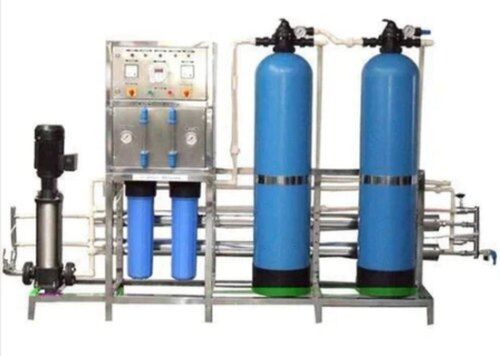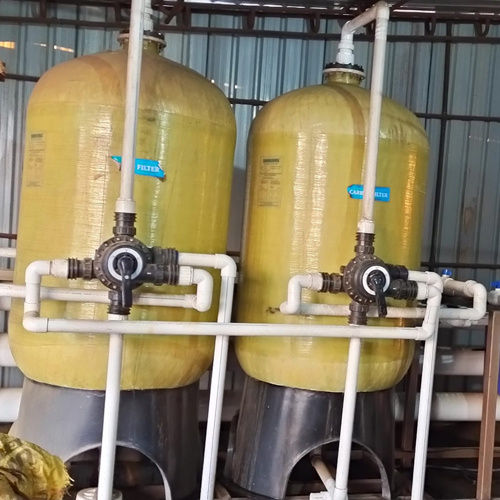Demineralised Water Plant
Price 2 INR/ Quintal
Demineralised Water Plant Specification
- Technology
- Ion Exchange Demineralisation
- Features
- Corrosion Resistant, Low Maintenance, High Efficiency
- Flow Rate
- Up to 10 m/hr
- Accessories
- Regeneration Tanks, Control Panel, Flow Meter, Pipe Fittings
- Usage
- Water Purification for Industrial Process
- Type
- Demineralised Water Plant
- Material
- Mild Steel / Stainless Steel
- Storage Capacity
- As per customer requirement
- Purifying Function
- Ion Exchange, Activated Carbon, Multi-stage Filtration
- Power
- Electric
- Valve Type
- Automatic / Manual
- Installation Type
- Floor Mounted
- Temperature
- 5C - 50C
- Dimension (L*W*H)
- Customizable (Standard: 1500 x 800 x 2000 mm)
- Voltage
- 220V/380V, 50/60 Hz
- Weight (kg)
- Approx. 250-500 kg (Depends on model)
- Capacity
- 1000 LPH - 10000 LPH (Liters Per Hour)
- Application
- Industrial / Laboratory / Pharmaceutical
- Mounting Type
- Floor Mounted
Demineralised Water Plant Trade Information
- Minimum Order Quantity
- 1 Number
- FOB Port
- FOB JNPT
- Payment Terms
- Cash on Delivery (COD)
- Supply Ability
- 1 Number Per Month
- Delivery Time
- 2 Week
- Sample Policy
- Contact us for information regarding our sample policy
- Packaging Details
- BOX
- Main Export Market(s)
- Asia
- Certifications
- ISO
About Demineralised Water Plant
-
Can a DM water plant remove all impurities from water?While DM water plants are highly effective in removing mineral salts and ions, they may not eliminate certain non-ionic impurities such as organic compounds, bacteria, and viruses. Additional treatment steps like reverse osmosis or UV sterilization may be required for complete purification.
-
How can I ensure the optimal performance of my DM water plant?Regular maintenance, including resin regeneration, monitoring of water quality parameters, periodic cleaning of system components, and timely replacement of consumables, is essential to ensure the continued efficiency and reliability of a DM water plant.
-
What is the difference between demineralized water and distilled water?Demineralized water is produced through ion exchange processes that remove mineral ions, whereas distilled water is produced by vaporizing water and condensing the steam, leaving behind impurities. Both types of water have low mineral content, but the methods of production differ.
-
Is it necessary to analyze the water quality before installing a DM water plant?Yes, analyzing the raw water quality is crucial to determine the appropriate treatment processes and system design for achieving desired water purity levels. Conducting water quality tests helps identify the specific contaminants present and their concentrations, guiding the selection of suitable treatment technologies.
Advanced Ion Exchange Purification
Utilizing state-of-the-art cation and anion exchange resins, the plant reliably removes dissolved minerals, producing highly purified water suitable for sensitive industrial, laboratory, and pharmaceutical processes. Multi-stage filtration including sand, carbon, and micron filters ensures extended resin life and optimal water quality.
Customized Solutions for Diverse Needs
The plant is built in customizable dimensions and capacities to fit specific user requirements. Whether you need detailed laboratory-grade water or large volumes for manufacturing, models range from 1000 LPH to 10000 LPH, with tailored storage solutions available. Its robust construction (mild steel or stainless steel) guarantees longevity and performance.
Efficient Operation with Flexible Automation
Users can select between semi-automatic or fully automatic configurations, matching their operational preferences. Integrated accessories like flow meters, control panels, and regeneration tanks streamline processes, while electric drive and variable voltage options support reliable, energy-efficient performance.
FAQs of Demineralised Water Plant:
Q: How does the Demineralised Water Plant purify water?
A: The plant uses ion exchange technology with cation and anion resins to systematically remove minerals and ions from groundwater. Pre-filtration stages employ sand, carbon, and micron filters, while automated or manual valve systems direct flow for high-purity outputideal for industrial and laboratory processes.Q: What types of water sources are suitable for this plant?
A: This plant is designed for groundwater sources containing up to 600 ppm of hardness (as CaCO3). Pre-filtration and robust resin systems ensure compatibility with varying raw water qualities, delivering consistent, demineralized water across a range of industrial settings.Q: Where can the Demineralised Water Plant be installed?
A: The unit is floor-mounted and can be placed in factories, laboratories, or pharmaceutical facilities. Its customizable dimensions and capacity options ensure a suitable fit for space and process requirements, making it accessible to distributors, suppliers, and manufacturers across India.Q: What is the regeneration process for the ion exchange resins?
A: Regeneration involves using acid and caustic soda chemicals to restore the cation and anion resins capacity for ion removal. This cycle is managed by the control panel, regeneration tanks, and flow meters, promoting uninterrupted and efficient water purification.Q: When is it recommended to use a mixed bed versus a two bed vessel configuration?
A: Mixed bed vessels achieve ultra-low conductivity, making them suitable when highly pure water (<10 S/cm) is necessary, such as for laboratory or sensitive manufacturing applications. Two bed systems are efficient for general industrial use where moderate deionization is acceptable.Q: What are the benefits of choosing this plant for water purification?
A: Key benefits include reliable removal of minerals, corrosion-resistant construction, low maintenance, high operational efficiency, and customizable configuration. The system supports both industrial-scale and laboratory uses, ensuring consistent and safe water quality every cycle.Q: Can the operational settings be customized for specific needs?
A: Yes, the plant offers options for manual or automatic valves, adjustable pressure (24 kg/cm), variable flow rates (up to 10 m/hr), and electric voltage compatibility (220V/380V, 50/60 Hz), enabling users to match their installation to local requirements and operational preferences.

Price:
- 50
- 100
- 200
- 250
- 500
- 1000+
More Products in Industrial Water Softening Plant for Cooling Tower Category
Industrial Water Softening Plant for Cooling Tower, Boiler & Process Application
Price 1500000.0 INR / Number
Minimum Order Quantity : 1 Number
Feature : SOFTNER PLANT WITH AUTOMATIC VALVE
Water Source : Borewell or Openwell
Power : 5 Horsepower (HP)
Purity Level : High

 Send Inquiry
Send Inquiry


